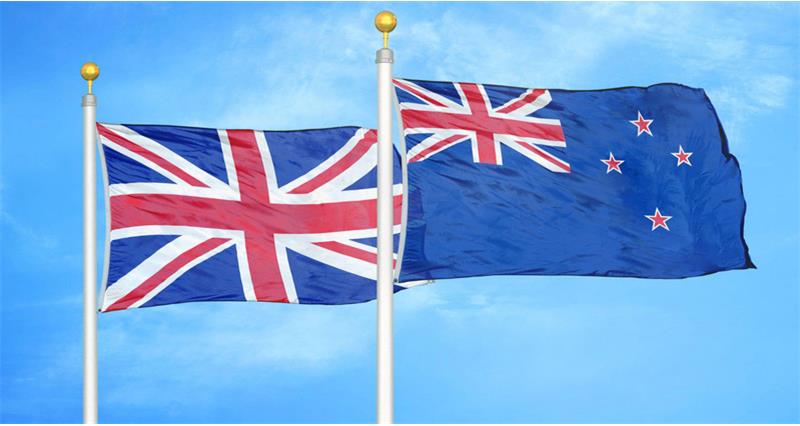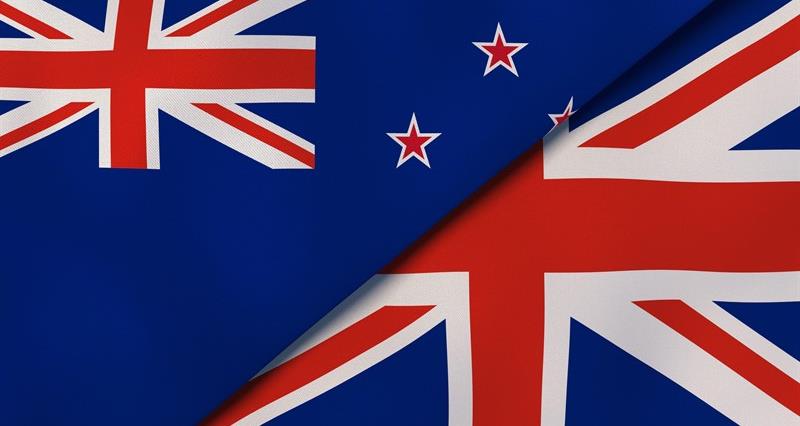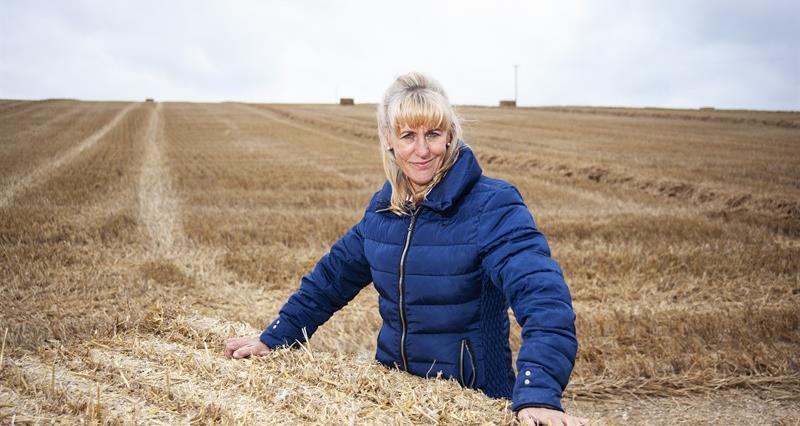When did the UK-NZ and EU-NZ trade deals come into force?
The FTA (free trade agreement) between the UK and New Zealand was signed in February 2022. The deal entered into force on 31 May 2023.
The FTA between the European Union and New Zealand was signed in July 2023, and is expected to come into force in 2024.
What are the differences in market access for the UK and the EU?
In the EU-NZ FTA, some sectors enjoy enduring protection through permanent TRQs (tariff-rate quotas) while in the UK-NZ FTA the protection for sensitive sectors disappears after a number of years.
In addition, the size of the different EU TRQs in the EU-NZ agreement is much smaller than the UK ones.
For example, the volumes of the EU beef, butter and cheese TRQs represent less than 1% of the EU consumption of those commodities.
In comparison, the volumes of the UK TRQs are much higher in relative and absolute terms and disappear over time.
For example, the UK lamb TRQ (combined with the WTO TRQ) represents more than 50% of the UK current production.
Full details of the UK TRQs and tariff schedule can be found at: GOV.UK | Tariff schedule for trade with New Zealand
Details on the EU TRQs and tariff schedule with New Zealand can be found at: CIRCABC | EU – New Zealand Free Trade Agreement
Market access – How does this differ?
Livestock – Beef and Sheep meat
| Beef | |
| UK / New Zealand Agreement | EU / New Zealand Agreement |
|
|
| Sheep meat | |
| UK / New Zealand Agreement | EU / New Zealand Agreement |
|
|
Dairy
| Butter | |
| UK / New Zealand Agreement | EU / New Zealand Agreement |
|
|
| Cheese | |
| UK / New Zealand Agreement | EU / New Zealand Agreement |
|
|
| Milk powders (whey and SMP) | |
| UK / New Zealand Agreement | EU / New Zealand Agreement |
|
Milk Powder
Dairy PAPs and High Protein Whey
|
Fruits and Vegetables
| Apples | |
| UK / New Zealand Agreement | EU / New Zealand Agreement |
|
|
| Pears | |
| UK / New Zealand Agreement | EU / New Zealand Agreement |
|
|
| Vegetables | |
| UK / New Zealand Agreement | EU / New Zealand Agreement |
|
|
| Other fruits | |
| UK / New Zealand Agreement | EU / New Zealand Agreement |
|
|
| Sweetcorn | |
| UK / New Zealand Agreement | EU / New Zealand Agreement |
|
|
Crops
| UK / New Zealand Agreement | EU / New Zealand Agreement |
|
|
Sugar
| UK / New Zealand Agreement | EU / New Zealand Agreement |
|
|
Ethanol
| UK / New Zealand Agreement | EU / New Zealand Agreement |
|
|
SPS (Sanitary and Phytosanitary) measures
The UK and New Zealand rolled over the existing agreement on Sanitary Measures applicable to Trade in Live Animals and Animal Products between the EU and New Zealand.
As a consequence, the number of physical checks on products of animal origin at BCPs (Border Control Points) are substantially reduced and inspection fees for these products also mutually reduced.
Other provisions include the recognition of equivalence in legislation, standards, procedures and clauses permitting safeguarding mechanisms for either party to take in case of immediate risks to public and animal health.
The full rolled over agreement can be found at: GOV.UK | Agreement between the Government of the United Kingdom of Great Britain and Northern Ireland and the Government of New Zealand on Sanitary Measures Applicable to Trade in Live Animals and Animal Products
There is also recognition of equivalence based on international standards and of the concepts of Pest Free Areas, Pest Free Places of Production, and Pest Free Production Sites, as well as areas of low pest prevalence.
One thing that is missing from the EU-NZ SPS chapter is the provision that ensures that SPS measures are based on the relevant international standards, guidelines, or recommendations, or if its sanitary and phytosanitary measures are not based on international standards, guidelines, or recommendations, that they are based on a risk analysis carried out in accordance with relevant provisions, including Article 5 of the SPS Agreement.
This is likely to ensure that the application of the EU’s precautionary principle is not inconsistent with the FTA provisions.
The EU-NZ and UK-NZ SPS chapters also cover cooperation on AMR (antimicrobial resistance).
In particular, the UK and NZ shall explore initiatives to promote the reduction or prohibition of unnecessary use of antibiotics in the rearing of animals for food production. Moreover, the exchange of information, expertise, data on AMR surveillance, and experiences in the field of combatting of AMR is encouraged.
As a point of difference, the dispute settlement mechanism does apply to the SPS Chapter in the EU-NZ FTA while it does not cover the SPS chapter in the UK-NZ FTA.
On animal welfare, the aim in both FTAs is to enhance cooperation between the parties.
GI (Geographical Indications) products
UK-NZ FTA
In the UK-NZ FTA, there are only provisions to protect Scottish whisky and nothing about the rest of the UK GIs, despite this being of real importance to UK exporters.
The two countries will review the situation if New Zealand signs an international agreement which requires it to protect GIs, or if New Zealand adopts any substantive change to its current GIs regime (for example, the introduction of a scheme for the registration and protection of agri-food GIs).
If New Zealand does not introduce a scheme within two years after entering the FTA, both sides will review the provisions related to GIs. There is no legal requirement for an agreement on GIs to be made, only to revisit discussions on the matter.
EU-NZ FTA
In the EU-NZ FTA, there are provisions to ensure that New Zealand’s regime for the registration of wine and spirits GIs will be extended to include GIs for agricultural products, foodstuffs and other types of beverages.
Alongside this, New Zealand and the EU will each protect a list of the other’s GIs. This means that only EU producers will be able to use the protected EU GIs on relevant products imported and sold in New Zealand, just as New Zealand wine producers will be benefit from protected GIs for wines exported and sold in the EU.
Some of these protections will be phased in over between 5 and 9 years, but eventually producers in New Zealand will need to stop using terms such as ‘sherry’, ‘port’ and ‘feta’ on their products. New Zealand has agreed that existing users can continue to use ‘gruyere’ and ‘parmesan’ on products containing cheese.



